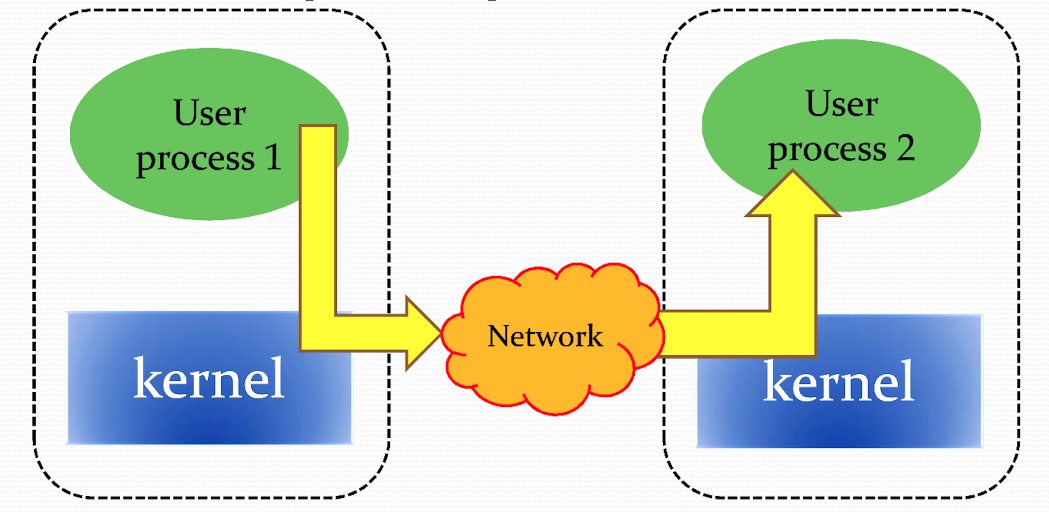Appearance
Network Programming
Introduction
Process commmunication
A process is a program in execution
In your computer, processes may talk with each other by inter-process communication (IPC). IPC methods include
- File locking
- Pipes
- FIFO
- Message queues
- Semaphores
- Shared memory
Processes may be also executed on different systems. From the viewpoint of each process, this is till IPC.

Image credit to Professor Wang's slides
Layering architecture
In the 7-layer model, each layer is responsible for different tasks.
| Layer | Task |
|---|---|
| Application | To allow access to network resources |
| Presentation | To translate, encrypt, and compress data |
| Session | To establish, manage, and terminate sessions |
| Transport | To provide reliable process-to-process message delivery and error recovery |
| Network | To move packets from source to destination; to provide internetworking |
| Data link | To organize bits into frames; to provide hop-to-hop delivery |
| Physical | To transmit bits over a medium; to provide mechanical and electrical specifications |
Data encapsulation
The data portion of a packet at level

Image credit to Professor Wang's slides
P2P vs. client-server
Network communications can be classified into two types:
Peer-to-peer (P2P)
Data may be distributed over all computer. A common example is torrenting in which data is segmented into small parts and distributed all over the user end systems. However, we still need a server to coordinate between endpoints, otherwise, we cannot find at which IP addresses the data exist.
Client-server architecture
Data may be concentrated on few sites, i.e., servers. And other computers, i.e., clients, may obtain their desired dat aby querying these sites.